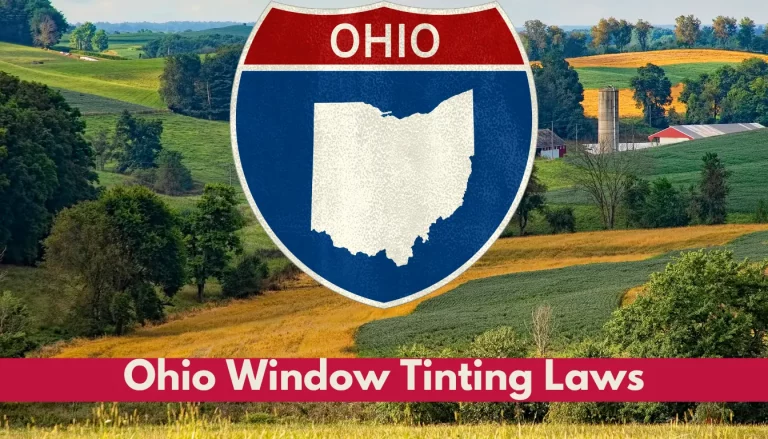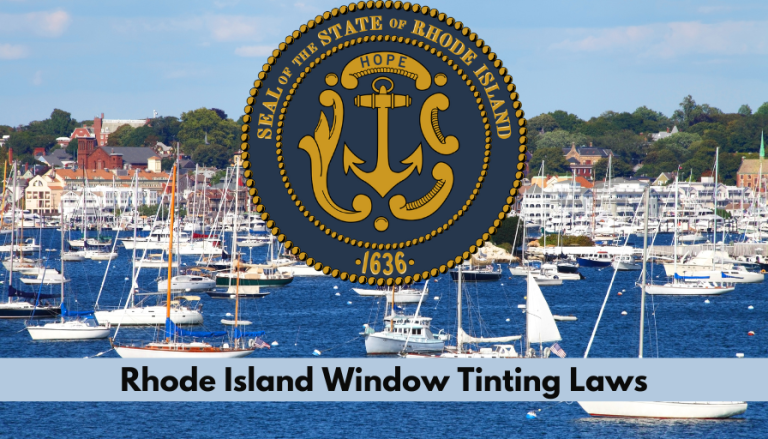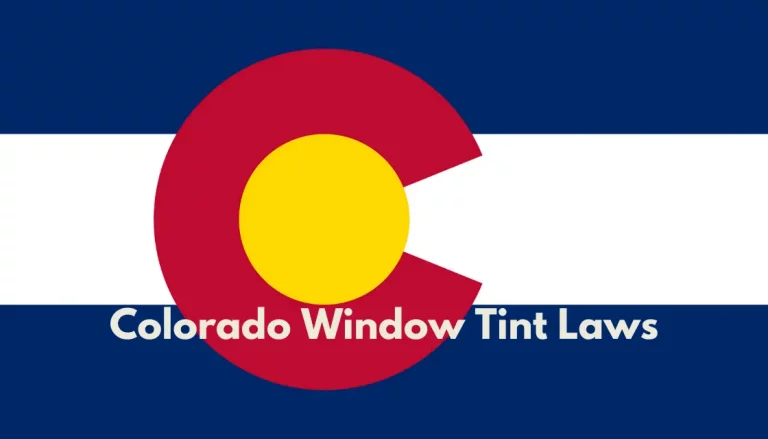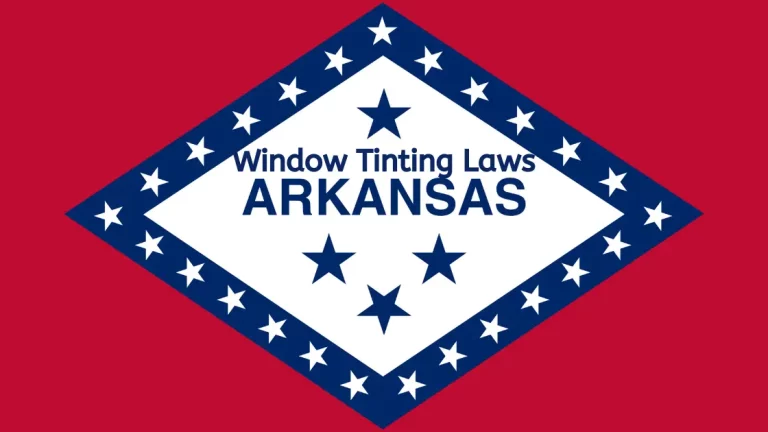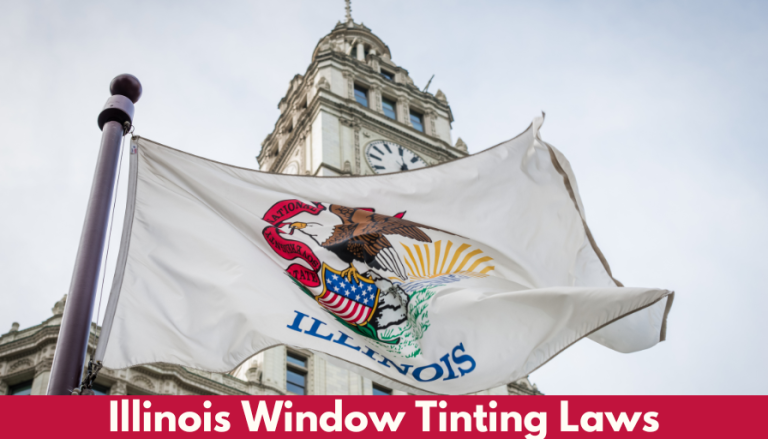Stay Legal: Guide to Oklahoma Window Tinting Laws
Driving in Oklahoma with tinted windows can give your vehicle a sleek look and keep the blazing sun at bay. But before you dive into the world of aftermarket tints, it’s crucial to know the state’s specific regulations. I’m here to guide you through Oklahoma’s window tinting laws, ensuring you stay on the right side of the law while cruising down Route 66.
Oklahoma’s laws on window tint are all about striking the perfect balance between style and safety. Whether you’re a lifelong resident or just passing through, understanding these rules can save you from unnecessary run-ins with the law. Stick with me, and I’ll make sure you know exactly how dark you can go with your window tints in the Sooner State.
Oklahoma Window Tinting Laws Explained
When it comes to modifying your car with window tint, it’s crucial to understand the specifics of Oklahoma law to ensure you’re not inadvertently breaking any rules. In Oklahoma, the amount of light allowed to pass through your car windows is regulated by the Visible Light Transmission (VLT) percentage. Basically, this percentage tells you the amount of light that must legally pass through the window tint on your car.
For sedans, Oklahoma’s VLT requirements are fairly straightforward:
- Windshield: Tinting is allowed above the AS-1 line (hence, not interfering with the driver’s view).
- Front Side Windows: Must allow more than 25% of light in.
- Back Side Windows: Must allow more than 25% of light in.
- Rear Window: Must allow more than 25% of light in.
However, for SUVs and vans, the laws differ slightly especially concerning the back side and rear windows:
| Location | VLT Requirement |
|---|---|
| Front Side Windows | > 25% |
| Back Side Windows | Any darkness allowed |
| Rear Window | Any darkness allowed |
Another critical component of Oklahoma tint laws is reflection. In Oklahoma, window tint can’t be more than 25% reflective for both the front side and back side windows. This rule helps to prevent the dangerous glare that can come off heavily tinted windows, ensuring safety not just for you but for other drivers as well.
Besides VLT and reflectiveness, there are other regulations to consider. For example, red, amber, and blue tints are always prohibited, as they can be confused with emergency vehicle lights. It’s also mandatory for vehicles with tinted windows in Oklahoma to have a sticker identifying legal compliance on the inside of the driver’s side door jamb.
I can’t stress enough the importance of adhering to these regulations. They’re designed to balance individual preferences with public safety concerns. Moreover, keeping these laws in mind while customizing your car’s windows ensures you stay on the right side of the law.
If you’re unsure about your window tint, professional installation shops are usually well-versed in state regulations and can guide you in making a choice that’s both aesthetic and legal.
Why Should You Know the Tinting Laws in Oklahoma?

Knowing the window tinting laws in Oklahoma is crucial for a number of reasons. First and foremost, compliance is key. The laws are in place to ensure safety for all road users. Tints that are too dark can significantly impair a driver’s visibility, especially during the night or in adverse weather conditions.
This can increase the risk of accidents. I’ve seen many car owners facing fines and penalties simply because they weren’t aware of the specific VLT percentage allowed.
Furthermore, understanding these regulations saves time and money. Imagine investing in a high-quality tint only to realize it’s not legal in your state. You’d have to remove it and risk damaging your windows, not to mention the cost of re-tinting with compliant materials. Many professional installation shops will guide you, but it’s always best to have your own knowledge to make informed decisions.
Aside from legal compliance and the practicalities of avoiding fines or re-tinting costs, there’s also the resale value of your vehicle to consider. Cars with illegal window tinting can be less attractive to potential buyers or might be valued lower. By adhering to the Oklahoma laws, you maintain the resale value of your car and ensure it’s appealing to the widest market possible.
Speaking of appeal, let’s not overlook the aesthetic aspect. While you might want the sleekest look for your ride, it’s important to balance style with legality. Knowing the laws helps you choose a window tint that not only looks good but also meets Oklahoma’s regulations, ensuring a classy look without the hassle of legal issues.
For those who value privacy and vehicle security, it’s essential to remember that following the law doesn’t mean you have to compromise on these aspects. The right tint can provide privacy and deter theft while still allowing enough light transmission to be legal and safe.
Understanding the Balance – Style vs. Safety
When choosing window tints, there’s always a tug of war-between the desire for a sleek aesthetic and the need to adhere to safety norms. I’ve noticed car enthusiasts often lean towards darker shades for their undeniable cool factor and privacy.
However, Oklahoma law stipulates specific limitations on how dark these tints can be. Safety, as it turns out, trumps style in this legal framework because while dark tints may look good, they can significantly reduce visibility, especially at night or during poor weather conditions.
Recognizing the balance is key. In Oklahoma, non-reflective tints are allowed on the top six inches of the windshield, and front side windows must allow more than 25% of light in. Here are the numbers broken down for easier understanding:
| Window Position | Light Transmission Allowance |
|---|---|
| Windshield | Non-reflective tint on top 6″ |
| Front Side | Over 25% |
| Back Side | Any darkness |
| Rear | Any darkness |
These regulations ensure that while drivers can enjoy a certain level of privacy and protection from the sun, they’re also not compromised when it comes to clear vision and safe driving. It’s important to remember that opting for tints within legal limits is not just a personal preference but a civic responsibility. Adhering to these standards minimizes the risk of accidents and ensures that other motorists aren’t endangered by reduced visibility on your part.
Tints serve more than an aesthetic purpose; they also protect from UV rays which can cause damage to your car’s interior and lead to skin cancer over time. With advancements in tint technology, you can now find films that offer high UV protection while still complying with tinting laws. It’s a matter of finding the right product that matches both style and safety standards.
It’s clear that staying on the right side of the law doesn’t mean compromising on style. By selecting the appropriate tints, you can ensure your vehicle turns heads for all the right reasons. My experience has taught me that an informed choice not only keeps you within the confines of the law but also makes for a safer driving experience, preserving the resale value of your vehicle and keeping everyone on the road a lot safer.
The Legal Tint Limits in Oklahoma
Here’s a breakdown of the regulations:
- Front Side Windows: Must allow more than 25% of light in.
- Back Side Windows: Any darkness can be used.
- Rear Window: Any darkness can be used as long as the vehicle has side mirrors.
These limits are in place to ensure drivers have sufficient visibility even in low-light conditions. It’s worth noting that for the front side windows, the limitation is generally stricter across most states, emphasizing the driver’s need for clear vision.
Besides VLT percentages, certain reflections on window tints are also regulated. In Oklahoma, tint reflection for:
- Front Side Windows: Must not be more than 25% reflective.
- Back Side Windows: Must not be more than 25% reflective.
The reflective tints can help reduce glare and heat absorption but must be monitored to avoid overly mirrored surfaces that can be distracting to other road users.
For drivers with medical conditions that require darker tints, exemptions are available. However, it’s crucial to have valid documentation that clearly states the specific need per Oklahoma’s Department of Public Safety standards.
Exceptions to the Tinting Regulations
Oklahoma’s window tinting laws have certain exemptions aimed at individuals with particular medical conditions. Understanding these exemptions is just as critical as knowing the standard regulations, especially for drivers who require special accommodations for their health.
Medical exemptions are provided for individuals who need protection from the sun’s rays due to a medical condition. In such cases, documentation from a licensed physician is a must. The state allows for darker or more reflective tints if you can present a certified statement that specifies your medical necessity. This document should always be available in the vehicle as law enforcement may request it during traffic stops.
It’s essential to note that these exemptions do not give carte blanche to disregard Oklahoma’s tinting laws entirely. The exemptions must be carefully adhered to, and the window tints should still allow for safe visibility. Keeping visibility in balance with the need for sun protection keeps everyone on the road secure.
The medical exemption requirements don’t apply to all windows either. Generally, the windshield and the front side windows need to comply with the stipulated visibility levels, so the exemptions often pertain to rear and back side windows. This ensures that the driver’s visibility is not impeded, maintaining a safe driving environment.
Tips for Complying with Oklahoma’s Window Tint Laws
Navigating through the nuances of Oklahoma’s window tint laws can be challenging. I’ve gathered some practical tips to help ensure you’re in full compliance. Whether you’re applying tint yourself or having it done professionally, keeping these suggestions in mind is crucial.
- Choose the Right Film: Be aware of the Visible Light Transmission (VLT) percentage. It’s the amount of light that a tint film allows to pass through your car windows. In Oklahoma, the VLT percentage varies depending on the window. Ensure the film you select meets the state’s requirements.
- Documentation and Certification: If a film’s manufacturer certifies the window tint as compliant with state laws, you’ll need to carry this certification in your vehicle. Some tints also require a sticker to identify legal tinting. These stickers should be visible and placed between the film and glass on the driver’s side window.
- Regular Checks and Maintenance: Tint can fade or bubble over time, potentially reducing visibility and causing non-compliance. To avoid this, it’s important to regularly check your window tint’s condition. If it deteriorates, you may need to replace it to stay within legal limits.
- Stay Informed on Exemptions: If you qualify for a medical exemption that allows darker or more reflective tint, ensure that you have the required documentation on hand. These documents must be renewed periodically, and it’s your responsibility to keep them up to date.
- Consult With Professionals: If you’re unsure about your window tint, consult with a professional. Reputable tint shops are familiar with Oklahoma regulations and can provide you with the correct product.
Always remember while a stylish appearance can be achieved with window tinting, safety, and legal compliance take precedence. Educating yourself and following these tips can help you make the best choices for your vehicle and stay on the right side of the law.
Conclusion
Staying on top of Oklahoma’s window tinting laws is crucial for any car owner in the state. I’ve shared some practical advice to help you navigate the regulations with ease. Remember, the right window tint can enhance your car’s look while offering protection from the sun’s harmful rays.


